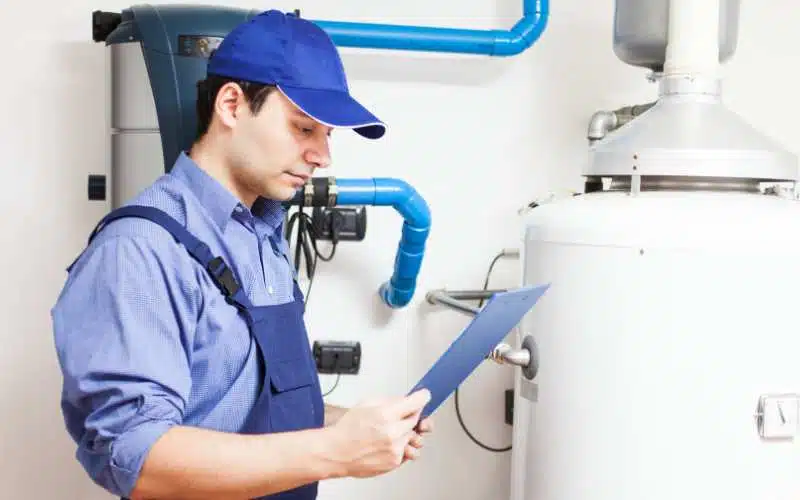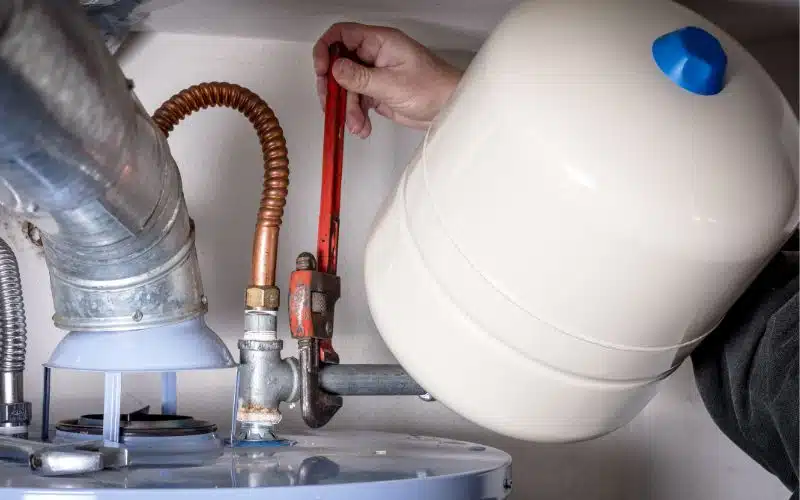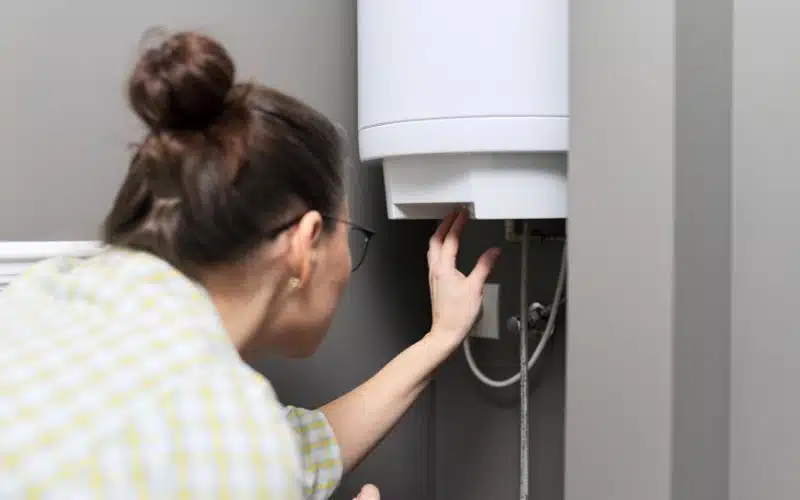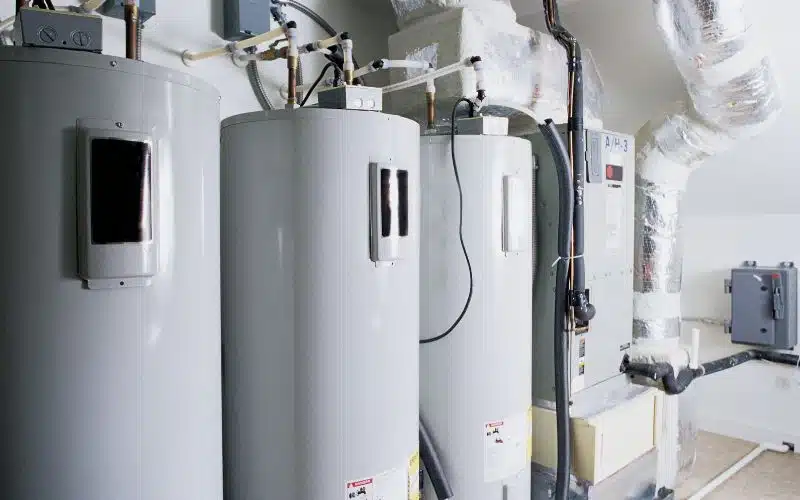A properly functioning furnace is essential for maintaining a comfortable and warm home during the chilly winter. The two-stage furnace has become popular in recent years.
Unlike single-stage furnaces, which have only one level of heat output, two-stage furnaces offer two levels of heat output, providing greater energy efficiency and improved temperature control.
If you’re a homeowner with a two-stage furnace or considering installing one, it’s crucial to know if it’s working effectively.
Several factors indicate when your two-stage furnace is working properly. When your two-stage furnace is working properly, you’ll experience a balanced temperature around the house. You’ll also notice a quiet operation, void of noise, a balanced airflow, and efficient cycling.
This article will explore the key indicators to help you determine whether your two-stage furnace is operating as it should.
By understanding these signs, you can ensure optimal performance, energy savings, and a cozy indoor environment throughout the winter season.
How Can I Tell if My Two-stage Furnace Is Working Properly?
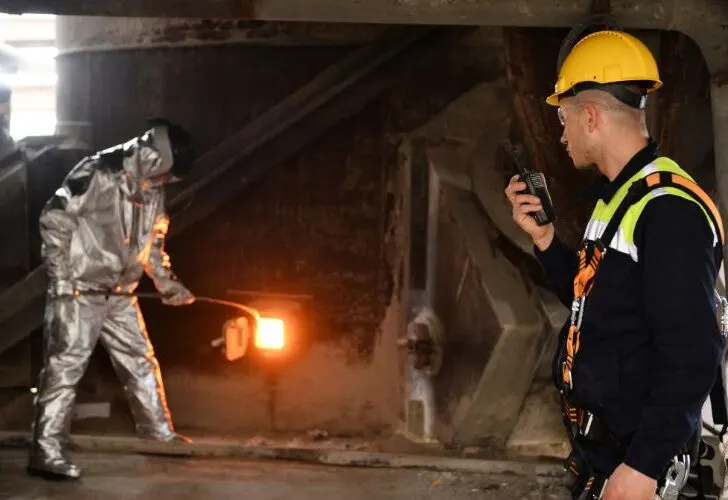
There are several factors to indicate when your two-stage furnace is working properly. These include;
#1. Steady Temperature
Observe if your home maintains a consistent temperature. A functioning two-stage furnace should evenly distribute heat, avoiding noticeable temperature fluctuations throughout the day.
#2. Balanced Airflow
Check for consistent airflow throughout your home. If some rooms feel significantly colder or warmer than others, it may indicate an issue with your furnace’s airflow distribution.
#3. Quiet Operation
A properly functioning two-stage furnace operates quietly. Unusual noises, such as rattling, grinding, or loud rumbling, could indicate mechanical problems requiring attention.
#4. Efficient Cycling
Observe the furnace’s cycling behavior; a two-stage furnace should run in longer cycles at a lower capacity during mild weather, providing energy efficiency. Short, frequent cycling may suggest a malfunction.
Regularly monitoring these key factors—temperature consistency, balanced airflow, quiet operation, and efficient cycling—will help you determine if your two-stage furnace is functioning properly.
If you notice any irregularities, contact a professional HVAC technician for a thorough inspection and necessary repairs.
Professional inspection and maintenance will help keep your furnace in optimal condition.
Remember, a well-functioning two-stage furnace ensures a cozy and comfortable home environment while keeping your energy costs in check.
Does a Two-stage Furnace Run Constantly?
No, a two-stage furnace will not run constantly.
As soon as it reaches a choice temperature and maintains balance, the furnace will modulate its heat output or cycle off intermittently, depending on the temperature fluctuations and demand for heat.
This behavior contributes to energy savings and ensures efficient operation.
Unlike single-stage furnaces that operate at a fixed heat output level, two-stage furnaces offer two levels of heat output: a lower stage and a higher stage.
The lower stage typically operates at around 60% to 70% of the furnace’s total capacity, while the higher stage kicks in during colder weather or when a significant demand for heat is present.
In normal conditions, a two-stage furnace will start by running on the lower stage to meet the initial heating requirements of your home.
The lower stage provides a consistent and energy-efficient heat output, maintaining a comfortable temperature without running at full capacity.
If the lower stage is sufficient to meet the desired temperature set on your thermostat, the furnace will continue to run at this level until the demand for heat increases or decreases.
When the temperature drops significantly, or there is a greater demand for heat due to cold weather or a large temperature difference between the indoor and outdoor environments, the two-stage furnace will automatically switch to the higher stage.
The higher stage operates at full capacity, delivering an increased heat output to quickly raise the temperature and ensure optimal comfort in your home.
Once it attains the choice temperature, the two-stage furnace will modulate its heat output to maintain the set temperature.
That means it will switch back to the lower stage or even cycle off momentarily, depending on the heating needs.
The ability of a two-stage furnace to modulate its heat output helps prevent temperature fluctuations and provides more precise temperature control, resulting in a comfortable indoor environment.
Contrary to a common misconception, a two-stage operates by modulating its heat output between a lower stage and a higher stage based on your home’s heating requirements.
The lower stage is sufficient for maintaining a comfortable temperature during normal conditions, while the higher stage kicks in when there is an increased demand for heat.
This dynamic operation allows for energy efficiency, improved temperature control, and a comfortable indoor environment.
Here’s a table showing the differences between a single-stage and two-stage furnace.
| Single-Stage Furnace | Two-Stage Furnace |
|---|---|
| Fixed gas valve | Two-staged gas valve |
| Single-speed blower motor | Variable-speed blower motor |
| High heat mode only | Has high and low heat modes |
| Easy to install and maintain | Installation and maintenance are expensive |
How Often Should a Two-stage Furnace Cycle On and Off?
A two-stage furnace typically cycles on and off multiple times per hour to maintain the desired temperature in the home.
The cycling frequency of a two-stage furnace can vary depending on several factors, including the choice of indoor temperature, the outdoor temperature, and the size and insulation of the home.
However, a properly sized and functioning two-stage furnace should generally cycle on and off less frequently than a single-stage furnace.
That is because two-stage furnaces have two heating stages: a low stage and a high stage.
The low stage operates at a lower capacity and is typically used to maintain a more constant and comfortable indoor temperature.
The high stage is activated when additional heating power is needed, such as during extremely cold weather or when the desired temperature is significantly higher than the current temperature.
The cycling frequency of a two-stage furnace will depend on the specific heating demands of your home.
During moderate heating conditions, the low stage may be sufficient to maintain the desired temperature, resulting in longer run times and fewer cycling events.
However, during extreme weather conditions, the high stage may need to be activated more frequently, resulting in shorter run times and more frequent cycling.
How Do You Know When a Two-stage Furnace is on Second Stage?
The following are indicators that can help identify when your two-stage furnace is on its second stage:
#1. Thermostat Programming
A crucial component in controlling a two-stage furnace is the thermostat.
Typically, there is a connection between the furnaces and a programmable thermostat that allows homeowners to set different temperature settings for various times of the day.
When the furnace operates in the second stage, the thermostat may display a “Stage 2” or similar indicator, signaling a higher heating output.
#2. Heat Output
One of the most noticeable differences between the two furnace stages is heat output. The furnace operates at a lower capacity in the first stage, providing gentle and consistent heating.
However, when the temperature drops significantly, or the thermostat calls for higher heat, the furnace switches to the second stage, producing a more robust and intense heat output.
If you notice a sudden increase in warmth throughout your home, it could be a sign that your two-stage furnace has transitioned to the second stage.
#3. Fan Speed
In a two-stage furnace, the blower fan speed can also provide insights into the stage of operation.
During the first stage, the blower fan generally operates at a lower speed, circulating air more quietly and gently.
However, when the furnace switches to the second stage, the fan speed often increases to distribute the higher volume of heated air.
Pay attention to the sound of the blower fan, as a noticeable increase in noise can indicate a shift to the second stage.
#4. Furnace LED Lights
Many modern furnaces have LED lights on their control panels, which can provide valuable information about the furnace’s operation.
These lights might be color-coded or labeled to indicate the stage of operation. Review the furnace’s user manual or consult the manufacturer’s website to understand the specific LED indicators for your model.
If your furnace features such lights, they can be a direct visual cue for identifying whether the system is in the second stage.
If you’re still uncertain whether your two-stage furnace is operating in the second stage, it’s always best to consult a qualified HVAC professional.
They have the expertise to evaluate your furnace’s settings, programming, and performance to confirm the stage of operation.
A professional can also provide guidance on optimizing your furnace’s efficiency and ensure it’s functioning as intended.
How Does The Thermostat Work On a Two-stage Furnace?
The function of the thermostatic start, or Thermostat, is vital in operating a two-stage furnace.
It ensures a smooth transition from the first to the second heating stage based on the temperature differential detected by the thermostat.
#1. Understanding the Thermostatic Start
The thermostatic start is a mechanism incorporated into two-stage furnaces to ensure a smooth and controlled transition from the first to the second heating stage.
When the thermostat detects a significant increase in heating demand, the thermostatic start function activates, signaling the furnace to shift from the initial stage to the higher heating capacity of the second stage.
#2. Sequential Staging
In a two-stage furnace, the first stage typically operates at a lower heating capacity, providing consistent and energy-efficient warmth.
This stage allows the furnace to maintain a stable temperature in mild weather conditions.
However, when the heating demand exceeds the capabilities of the first stage, the furnace engages the second stage for more substantial heating output.
#3. Temperature Differential
The thermostatic start function relies on the temperature differential, which is the difference between the current temperature in the home and the desired temperature set on the thermostat.
When the temperature differential reaches a certain threshold, the thermostat activates the thermostatic start function to transition to the second stage.
This programmable threshold allows homeowners to customize the furnace’s behavior based on their specific comfort preferences.
#4. Controlled Firing Rate
During the transition from the first stage to the second stage, the thermostatic start function gradually increases the firing rate of the furnace.
Instead of an abrupt switch, this controlled ramp-up ensures a seamless transfer of heating power, minimizing temperature fluctuations and optimizing energy efficiency.
The thermostatic start helps prevent temperature overshoot and ensures more precise temperature control within the home.
#5. Energy Efficiency Benefits
The thermostatic start function in a two-stage furnace contributes to energy efficiency in multiple ways.
By operating primarily in the first stage during milder conditions, the furnace consumes less fuel or electricity, reducing energy consumption and utility costs.
The controlled transition to the second stage avoids unnecessary high-capacity heating, preventing wastage and providing more precise temperature control.
Additionally, the gradual ramp-up minimizes short cycling, enhancing energy efficiency and prolonging the furnace’s lifespan.
